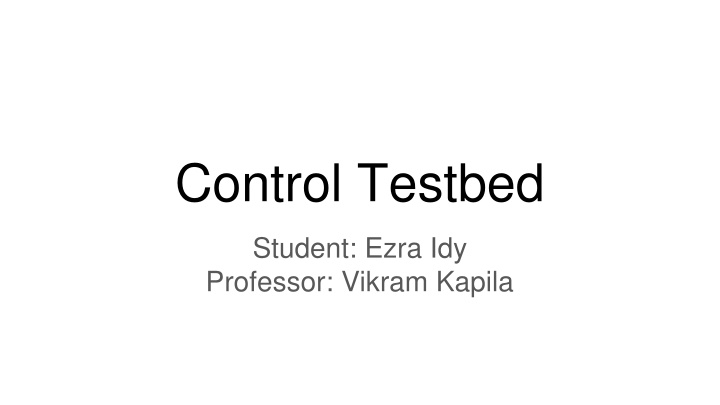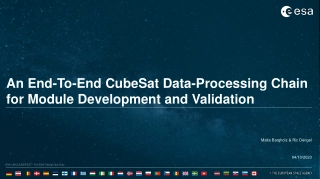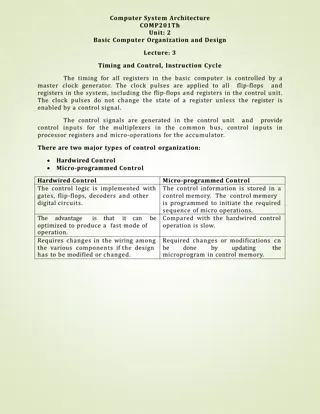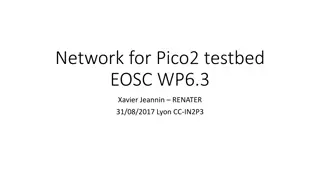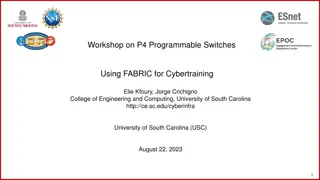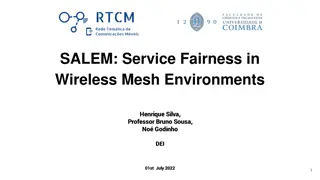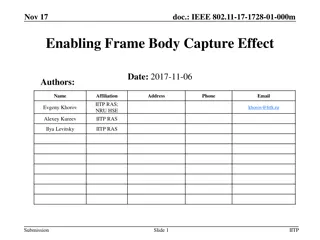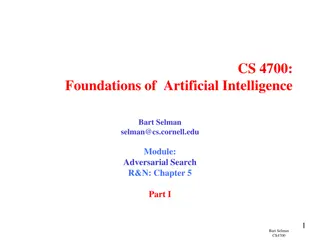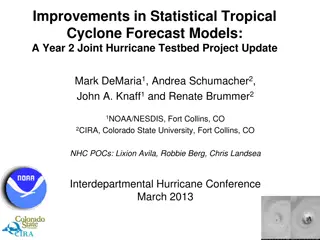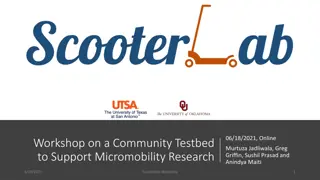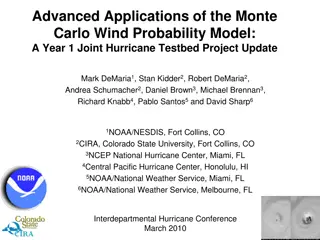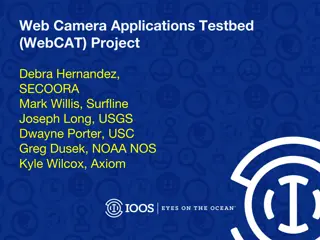Control Testbed
Understanding the concept of sensor fusion and its importance in improving system performance. Exploring the design and components of a sensor fusion testbed for data analysis. Detailed information on sensor types, testbed designs, cost breakdown, and specific components like cameras, motors, and microcontrollers.
Uploaded on Mar 05, 2025 | 1 Views
Download Presentation

Please find below an Image/Link to download the presentation.
The content on the website is provided AS IS for your information and personal use only. It may not be sold, licensed, or shared on other websites without obtaining consent from the author.If you encounter any issues during the download, it is possible that the publisher has removed the file from their server.
You are allowed to download the files provided on this website for personal or commercial use, subject to the condition that they are used lawfully. All files are the property of their respective owners.
The content on the website is provided AS IS for your information and personal use only. It may not be sold, licensed, or shared on other websites without obtaining consent from the author.
E N D
Presentation Transcript
Control Testbed Student: Ezra Idy Professor: Vikram Kapila
Background What is Sensor Fusion? The combination of data from several sensors for the purpose of improving application or system performance. 3 distinct types: Competitive Fusion independent measurements of the same property Complementary Fusion more complete view of object Cooperative Fusion derived information to obtain completely new information 2
Objective Create an easy, affordable, and accessible Sensor Fusion system Analyze the data obtained from: Individual sensors Multiple sensors 3
Testbed: First Design 8-bit encoder Parallax Continuous Servo Motor Apriltag Battery Pack Raspberry Pi & Shield Raspberry Pi Camera 4
Testbed: Second Design Parallax Feedback 360 High Speed Servo Motor Apriltag Raspberry Pi Parallax Propeller Raspberry Pi Camera 5
Cost Parts Amount First Design Second Design Raspberry Pi 3 1 $40 $40 Parallax Propeller Board 1 $0 $71 Raspberry Pi Camera 1 $26 $26 Servo Motor 1 $15 $28 Servo/PWM Pi HAT 1 $17 $0 Miscellaneous 1 $70 $70 Total ------ $168 $235 Universal Power Module Model No. UPM 1503: $374.98 Quanser Consulting Plant SRV-02 Tachometer + Amenities : $9,171.48
Parallax Propeller 8-core Propeller microcontroller and 64 KB EEPROM 5 cogs used for this project 3 position power switch 16 programmable GPIO pins P0 - P15 7
Camera The Camera is used to detect the AprilTags orientation Converted Quaternion into Roll, Pitch, Yaw The rate of the Camera is 60 Hz High resolution images Slow but accurate Lighting issues when detecting 8
Motor The motor is a continuous servo motor with a feedback pin Uses internal Hall effect sensors No need to center the motor Feedback signal: PWM, 3.3V, 910 Hz, 2.7% 97.1% duty cycle Low load rotation from -120 to 120 RPM Peak stall torque @ 6 V: 2.5 kg-cm (34.7 oz-in) 9
Application Educational purpose Can be used to teach sensor fusion on a basic level Interactive learning Learn Kalman Filtering and PID control Embedded vs remote Learn about the different sensor types and how they affect a system 10
Communication Serial ROS Bridge 11
Serial Communication 1 Communication is done through the USB serial port Data is given by user Processed and converted into a byte array Once on the Propeller end, the data is converted back to the appropriate values For angles two bytes are sent Bit shifting is needed 12
Serial Communication 2 Communication is done through GPIO Seperate channel to send the camera data Bit shifting is used 13
PID Control Allow for move to target control Output is experimentally tested and maxed at 120 Due to restrictions in the serial communication, all gains are limited from 0 to 25 Incorporated in the app 14
Kalman Filtering Implement Kalman Filtering that will add weighted values to the different data obtained The noise Q and R were arbitrarily selected Fine tuning may be needed Incorporated in the app 15
Fusion Applying competitive fusion Interactive voting depending on reliability of the sensor Incorporated in the app 16
Graphic User Interface Redesigned GUI Tabbed application Connect to ROS through ROSBridge Allow for the selection of options: Fusion PID Kalman Easy testing Can observe the data from the app 17
Future Work Take a video 18
Entrepreneurship Project was chosen for the Stern Entrepreneurship collaboration The Stern students are currently validating customers Testing the educational marketplace In contact with CIJE (Center for Initiatives in Jewish Education) In contact with ITEST 19
